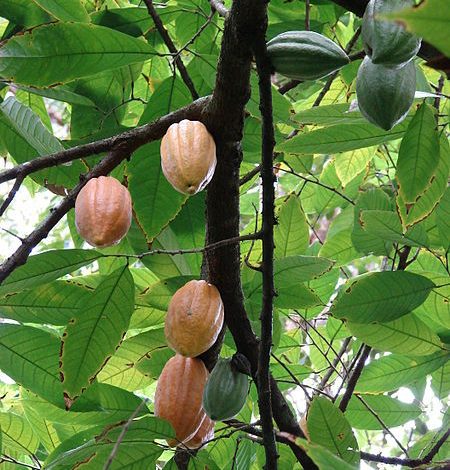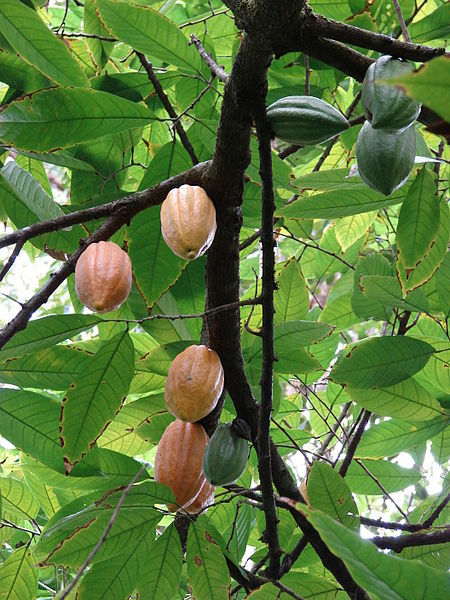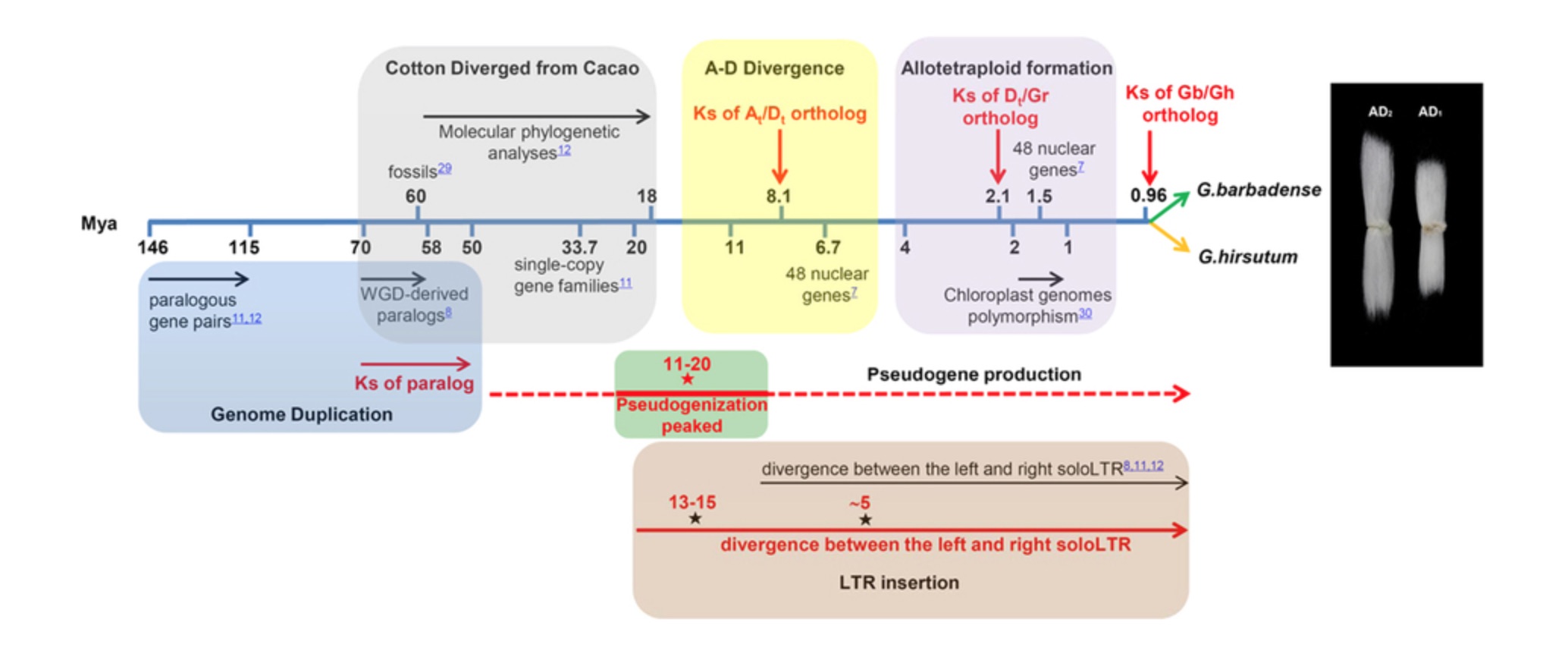Cotton and Cacao, a Surprising Relationship


Last week, I left my article to go and find warmth as I dived into my cotton pants, cotton shirt and a cup of cocoa. I had explored the background and uses of cotton and then asked, “Why would cotton be naturally as brown as chocolate?” I found that answer as I tugged on the most basic threads that make up cotton; DNA. It seems that somewhere along the long line of evolution, chocolate and cotton had common ancestors! (1)
The plants that we know now as cotton and chocolate were related!
In this diagram, we can see some of the relationships as we look under the skirts of cottons’ DNA. This traces cotton´s family tree back to a point where genomic duplication has taken place. While the term Mya seems rather scientific and full of import, it simply means ‘million years ago’ This places the genetic event that separates cotton from cacao some where between the extinction event of the cretaceous period (end of the dinosaurs) and the bio-zone (an specific set of fossils) that contains equus or the ancestors of horses.

There is a lot to be said about the natural and un-natural evolution (another article) of both chocolate and cotton plants. The distance through time, and the pressures of human cultivation, have had extraordinary impact on both plants.
When cotton began to be cultivated for its long fibers, people selected plant seeds that produced the most vibrant colors, and also produced cotton in one season. Cotton is a perennial plant, and in wild forms produces its crop after two years of growth. During cultivation, the annual versions were preferred.

As previoiusly stated in Cusco eats, in Dr. David Knowlton’s article entitled “Cacao and the Amazon” Motamayor and colleagues have argued that people in the Amazon did not value the cacao plant for its seeds until fairly recently. Instead they are argued to have valued its fruit pods which vary widely in taste. Plant scientists argue, as a result, indigenous people of the Amazon basin selected fruit with good flavor and size. These they transported back to their villages, it is said, and cast the seeds into their garbage dumps around the edge of the village. There the seeds sprouted and produced cacao of the type they liked leading to a process of semi-domestication.”
Cotton has been domesticated and cultivated through thousands of generations of genetic mutation. Cacao also is undergoing changes in genetics. This leads to another discussion about what it means to pressure a genome to branch one way or another, and as these two plants are veritable trunks the trees under which we live and smile.




